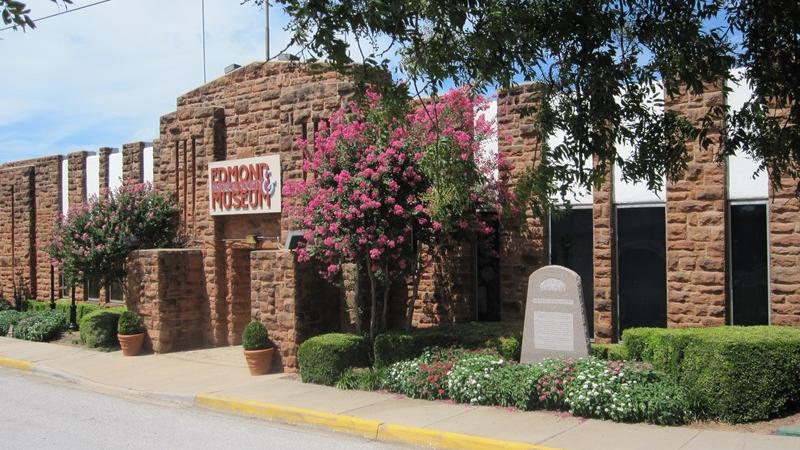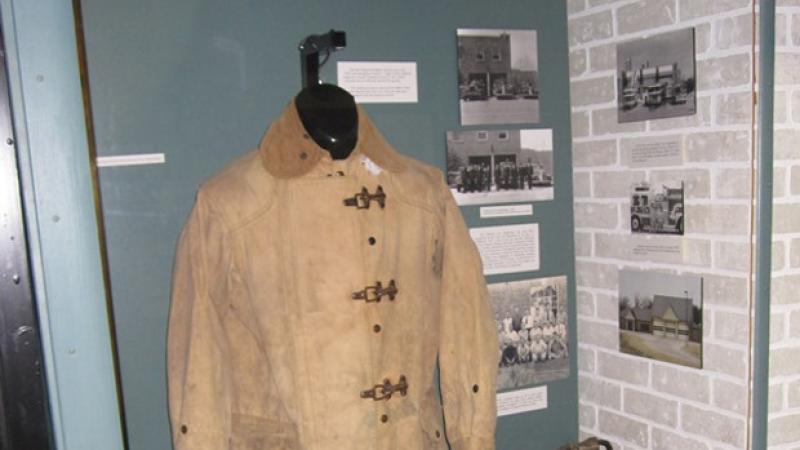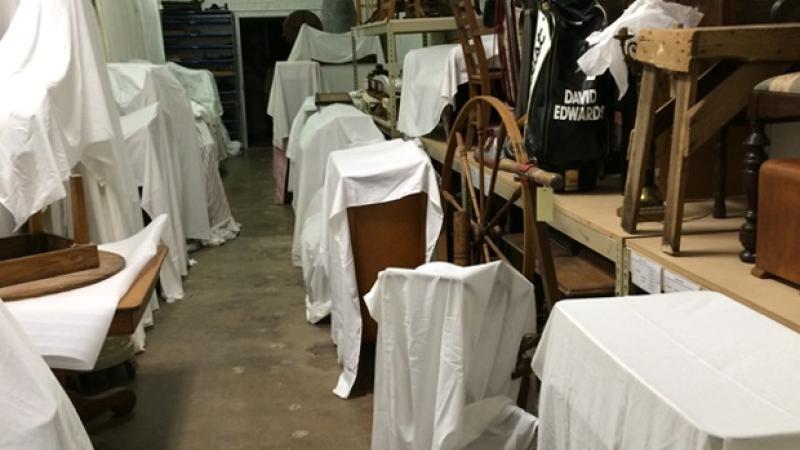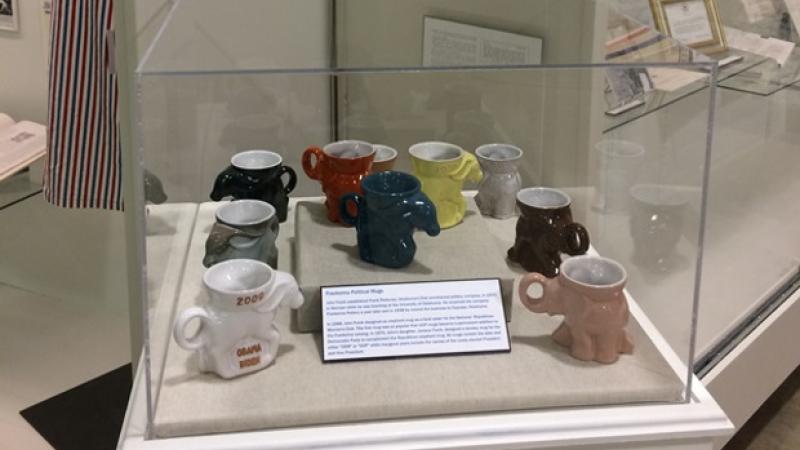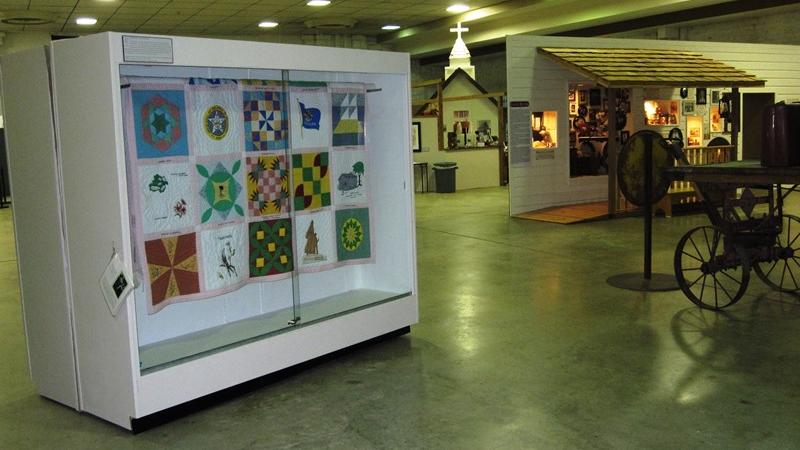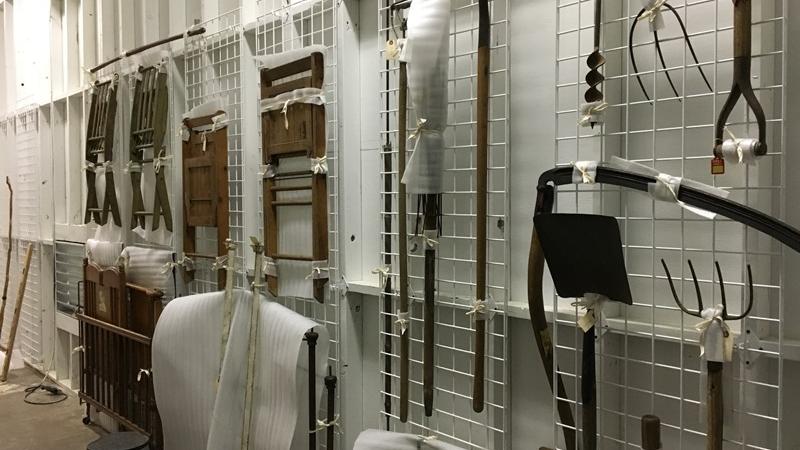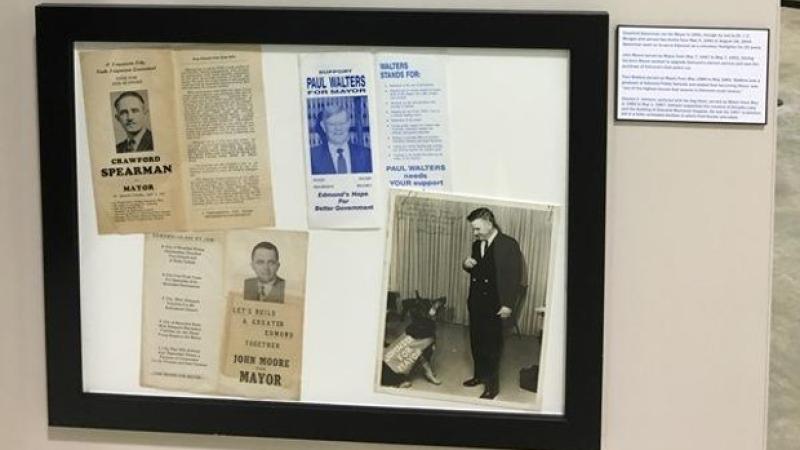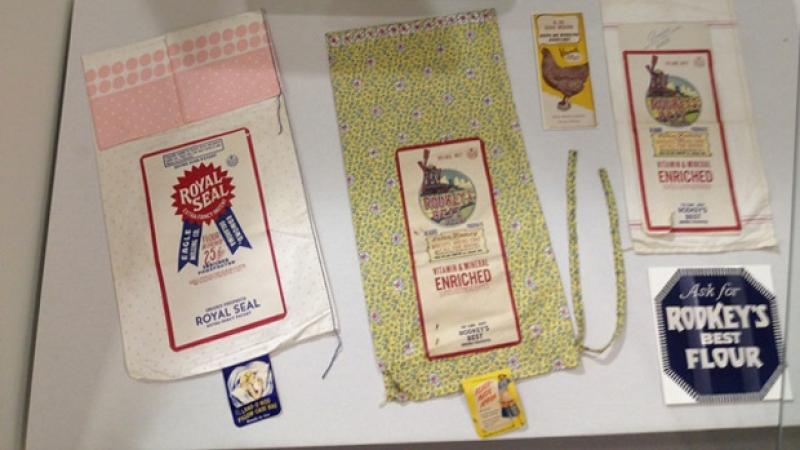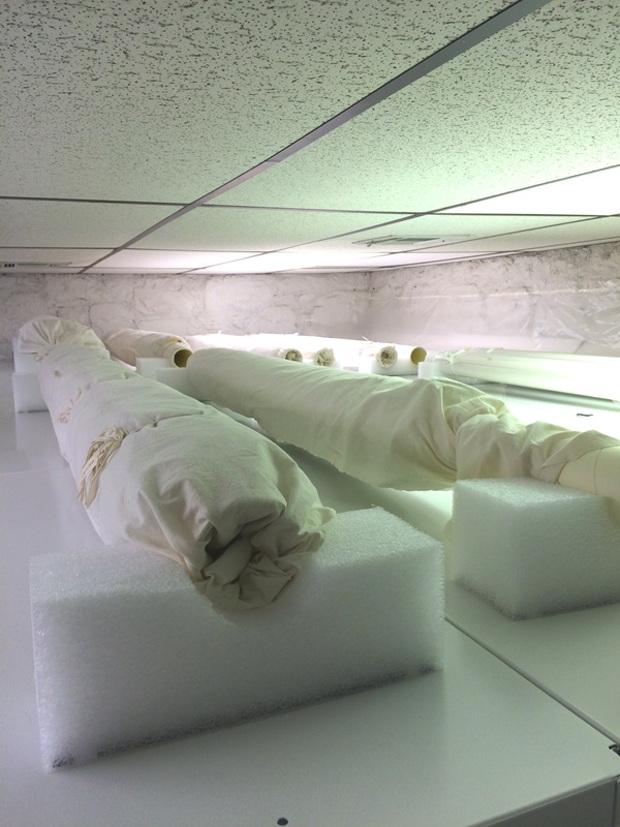50 States of Preservation: Edmond Historical Society and Museum in Edmond, Oklahoma
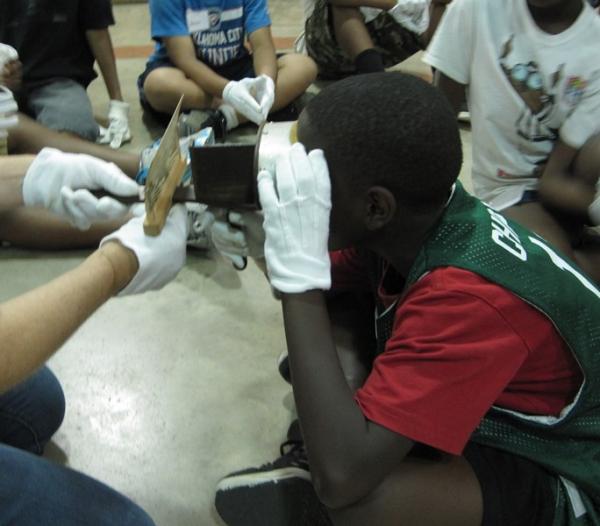
A summer visitor with a stereoviewer learning about 19th-century 3-D.
Image courtesy of Edmond Historical Society & Museum

A summer visitor with a stereoviewer learning about 19th-century 3-D.
Image courtesy of Edmond Historical Society & Museum
This feature is part of a series we call “50 States of Preservation,” in which we are touring small and mid-sized museums, libraries, historical societies, and other repositories across the country to show how they are helping to preserve the nation’s cultural heritage. Read other entries in the series here.
We don’t typically consider flour bags as objects of beauty, and most people wouldn’t ever use them for anything but flour. Yet during the Great Depression, crafty women and thoughtful manufacturers created out of necessity a new phenomenon: the flour sack dress. With fabric, like other things, in short supply, many women used old sacks to create clothing, aprons, diapers, pillow cases, and dolls. When flour companies learned about this practice, born of scarcity, they began producing bags with colorful patterns and cheery designs. Decorated flour sacks from the 1930s are just some of the nearly 40,000 artifacts visitors can see at the Edmond Historical Society and Museum (EHS&M) in Edmond, Oklahoma. And with the support of three grants from NEH’s Division of Preservation and Access, the EHS&M is preserving these items and making them accessible to tens of thousands of visitors each year.
“These funds have been invaluable to us,” said EHS&M’s Curator of Collections Deborah Baker. “They have enabled us to put together a preservation plan for our collection and complete all of the highest priority projects to improve the storage and care of our collections.”
The Santa Fe Railway chose Edmond as a stop because of its location at a high point on the Oklahoma line, and a historic Land Run followed in 1889 during which the town was born. EHS&M’s collection of documents, photographs, farm equipment, and furniture depicts the history of Edmond from its pioneer roots to the present. Some 22,000 photographs document Edmond’s beginnings and depict, among other things, early pioneers, notable citizens, historic homes, businesses, schools, and community events. EHS&M holds over 2,000 documents and volumes describing Edmond’s economic and social history. Its collection of objects and textiles tells of daily life for pioneers, farmers, businessmen, students, athletes, public servants, and veterans. The Historical Society & Museum also boasts a ¼ scale replica of the town’s first church, a freight cart from the Edmond train depot, and an early press from the Edmond Sun, the oldest continuously printed newspaper in Oklahoma.
NEH support over the past several years has enabled the EHS&M to improve the care of its humanities collections. Thanks to grant funds, the Historical Society and Museum has consulted with Oklahoma conservation experts Ann Boulton and Anne Murray, completed a collections preservation plan, improved environmental monitoring, instituted an integrated pest management system, installed grid wall storage, upgraded their roll storage of quilts and flags, and is working to safely store fragile and unique items such as community scrapbooks.
In addition to serving local residents, college students from Edmond’s University of Central Oklahoma, and visitors passing through along Route 66, the EHS&M also supports a lively educational program. In one exhibit, children can explore life in Edmond in 1889 including a tipi, garden, general store, train station, post office, bank, prairie house, and more—all decorated with reproductions of vintage photographs.
“We have over 20,000 visitors to Edmond Historical Society & Museum annually, and we love to share our wonderful collections both through our exhibits and educational programs,” explains Curator Deborah Baker. “The projects we have been able to complete with our NEH grants not only help us preserve these collections, but also enhance our ability to access them as well.”
In every state, NEH supports organizations that preserve humanities collections. Preservation Assistance Grants for Smaller Institutions (PAGs) fund projects that help safeguard photographs, letters, documents, prints, moving images, sound recordings, maps, drawings, artworks, textiles, furniture, and artifacts, making them available for future generations. These collections help researchers, educators, and members of the public better understand the complex stories of the various cities, towns, and tribal groups that make up our nation. Since 2000, NEH has made nearly 2,000 Preservation Assistance Grants to small and mid-sized organizations to preserve and care for their humanities collections. In all 50 states, the District of Columbia, and Puerto Rico and the Virgin Islands, PAG awards have funded preservation assessments, purchase of shelving, environmental monitoring equipment, and preservation supplies, and training for staff. Organizations in all states and U.S. territories are eligible to apply, and the program encourages applications from those new to NEH. The next application deadline Preservation Assistance Grants for Smaller Institutions is May 2, 2017. If you have any questions about this grant program, please contact us at @email or 202-606-8570.
